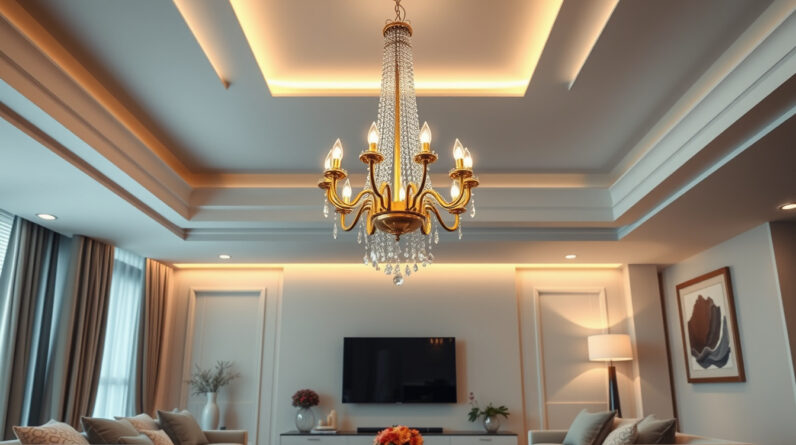In today’s rapidly evolving technological landscape, smart home integration has become more than a luxury—it’s a necessity for those looking to enhance their living experience. Seamlessly connecting devices, appliances, and systems transforms a traditional residence into a highly efficient, convenient, and secure environment. Whether you’re a tech enthusiast or a homeowner seeking practical upgrades, understanding how to maximize smart home integration can significantly improve your daily life and energy savings.
This comprehensive guide explores essential tips for effective smart home integration, ensuring your modern living space is both functional and future-proof.
Why Is Smart Home Integration Important?
Before diving into the tips, it’s crucial to understand why smart home integration is a game-changer. It centralizes control, optimizes energy use, enhances security, and provides unmatched convenience. With integrated systems, you can manage everything from lighting and climate to security and entertainment via a single device or voice command.
According to industry insights, homes with well-integrated smart systems tend to be more energy-efficient and appealing to prospective buyers, boosting property value (source). As technology advances, the potential for automation and remote management grows, making smart home integration a smart investment.
Key Components of Smart Home Integration
Effective smart home integration involves connecting various devices and systems through a shared platform. Here are the main components:
- Smart Hubs and Controllers: Centralize device management.
- Wireless Protocols: Wi-Fi, Zigbee, Z-Wave, and Bluetooth enable communication.
- Smart Devices: Thermostats, lighting, security cameras, locks, and appliances.
- Voice Assistants: Amazon Alexa, Google Assistant, Apple Siri.
- Automation Software: Apps and platforms that create routines and schedules.
Essential Tips for Successful Smart Home Integration
Achieving a fully integrated smart home requires strategic planning and execution. Here are essential tips to guide you:
1. Define Your Priorities and Goals
Begin by identifying what you want to achieve with smart home integration. Do you seek energy savings, enhanced security, or convenience? Pinpointing your priorities helps in selecting suitable devices and automation routines. For example, if energy efficiency is a goal, focus on smart thermostats and lighting controls.
2. Choose a Unified Ecosystem
Select devices and platforms that are compatible and can be managed through a common interface. Using devices that work with popular ecosystems such as Amazon Alexa, Google Home, or Apple HomeKit simplifies integration and ensures smooth operation.
3. Invest in a Reliable Smart Hub
A robust smart hub acts as the control center for your automation system, facilitating device communication. Options include Samsung SmartThings, Hubitat, or Aqara. A reliable hub reduces latency, prevents disconnects, and enhances security.

4. Prioritize Security and Privacy
Smart systems are connected to your home network, making security paramount. Change default passwords, enable two-factor authentication, and keep firmware updated. Consider encryption options and restrict access to trusted users only.
5. Plan Your Network Infrastructure
A strong Wi-Fi network is the backbone of smart home integration. Use mesh Wi-Fi systems if your home is large or has dead spots. Place routers centrally, limit interference, and consider wired connections for critical devices to improve stability.
6. Automate Thoughtfully
Create routines that enhance daily life without becoming overly complicated. For instance, set lights to turn on at sunset, automate door locks when you leave, or have the thermostat adjust based on occupancy or weather conditions.
7. Test and Update Regularly
After setup, continuously test devices and integrations to ensure smooth operation. Keep firmware and apps updated to patch vulnerabilities and improve functionality.
Benefits of Smart Home Integration
Implementing these tips can bring numerous advantages:
- Energy Efficiency: Automate lighting and climate control to reduce power consumption.
- Enhanced Security: Monitor your home remotely through cameras and smart locks.
- Convenience: Control multiple devices via one app or voice command.
- Increased Property Value: Modern integrated systems appeal to buyers.
- Personalization: Customize routines to fit your lifestyle.
Overcoming Common Challenges
While smart home integration offers many benefits, challenges like device compatibility issues, network congestion, and security concerns may arise. To address these:
- Check Compatibility: Ensure new devices work seamlessly with your existing ecosystem.
- Simplify Your Network: Limit connected devices to essential ones to prevent overload.
- Consult Professionals: Engage with experts for complex setups and security assessments.
Top 5 Smart Home Devices to Start Your Integration Journey
If you’re new to smart home integration, here’s a quick list of essential devices to consider:
- Smart Thermostat: Nest Learning Thermostat or ecobee.
- Smart Lighting: Philips Hue or LIFX.
- Smart Locks: August Smart Lock or Schlage Encode.
- Security Cameras: Arlo Pro series or Ring Video Doorbell.
- Voice Assistants: Amazon Echo, Google Nest Audio.
Frequently Asked Questions About Smart Home Integration
What is the best way to start smart home integration?
Begin by identifying your priorities, choosing a compatible ecosystem, and gradually adding devices. Start with essentials like lighting and security, then expand based on your needs.
How secure is smart home integration?
When properly secured—using strong passwords, regular updates, and secure networks—smart home systems are quite safe. However, be aware of potential vulnerabilities and practice good cybersecurity habits.
Can I integrate smart home devices from different brands?
While many devices are now compatible across platforms, it’s best to stick with one ecosystem for seamless control. Verify device compatibility before purchasing to ensure smooth integration.
Final Thoughts: Embrace the Future of Modern Living
Smart home integration is transforming the way we live, offering convenience, security, and efficiency that were once unimaginable. By following the essential tips outlined in this guide—such as defining your priorities, choosing compatible devices, and investing in a reliable network—you can create a cohesive smart home environment tailored to your lifestyle.
Don’t wait to experience the many benefits that intelligent automation can bring. Take the first step today, and turn your house into a modern, efficient, and secure haven with smart home integration.
Ready to upgrade your living space? Explore our recommended smart devices and start your smart home journey now!








